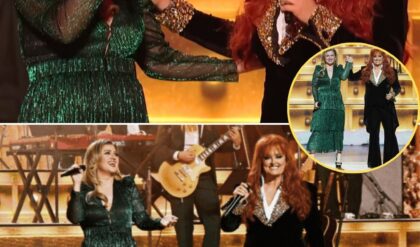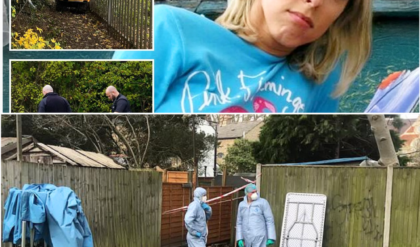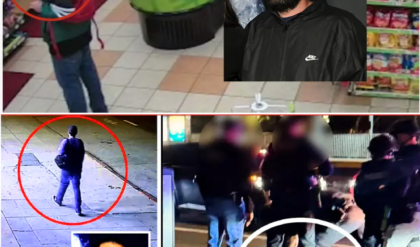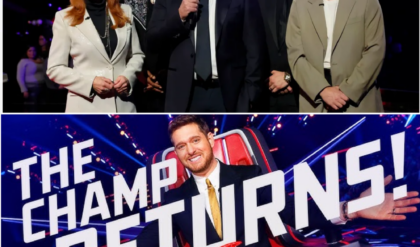
I can’t believe people are looking to her for marketing tips
Emily in Paris is a story about a marketing queen who writes #bonjour on Instagram and gains 10,000 followers, so it’s pretty safe to say that it’s not a very realistic show. However, there are some moments where Emily comes up with some genius marketing ideas, and she’s done such a good job of it that she’s now heading up her own office in Rome. So, what is it that actually makes Emily a good marketer, underneath all the influencer stuff the show exaggerates? Marketing experts from Webbee have sussed it out for themselves.
“Opinions may vary, but Emily in Paris does blend both correct and fictionalised elements of the marketing profession,” the experts told The Tab. “Not everything can fit into a 30-minute episode, but businesses and marketers can still learn valuable lessons from Emily’s campaigns and apply them in the real world.” So, what does Emily actually get right about being a girlboss marketing legend?
She uses a lot of user-generated content

Emily is the QUEEN of influencers and getting real people engaged. In season one, episode five, Emily set up Hästens Beds in Instagrammable spots around Paris and encouraged people to share photos online.
This is the power of user-generated content: The goal was to get people to use the beds, take pictures, and tag the brand on social media, spreading the word naturally. Effortless!
Webbee marketers say that this strategy isn’t just for luxury brands, but can work well for small, non-luxury businesses too. Invite people to take photos and share them online – it’s an easy and effective way to get people talking about your business!
“As someone with over a decade in marketing experience,” the expert adds, “I can tell UGC builds genuine trust. When people share their real experiences, it’s way more relatable and natural than any scripted or forced content.” Hats off to Emily!
The power of using your employees

via Netflix
In episode five of season four, Emily shares a video of Gabriel’s dessert chef, Fabien, making the newest apple dessert on the menu. The video, which highlighted the person behind the dessert, got over 1,000 likes and 300 comments on Instagram – basically, people loved it. Webbee’s experts say EGC has been traditionally used for recruitment and company culture videos but now, businesses are turning to employees to promote their products and services.
“Businesses, whether luxury or small-scale, need to get on this bandwagon and humanise by getting real faces out,” they explain. “Encouraging employee generated content and not forcing it, benefits both employees and the business while being cost-effective.”
A recent LinkedIn poll by Girls in Marketing found that 60 per cent of 2,505 respondents want their employers to encourage EGC. People love playing influencers for a day!
Webbee experts emphasise: “Although EGC shouldn’t make up your whole marketing strategy, it can be a valuable part of it. For instance, if you have 50 employees and only 10 per cent engage in EGC, that’s five additional individuals spreading your brand message through their networks, which can drastically boost your visibility.”

via Netflix
There actually is a right and wrong way to create employee generated content. Webbee suggests that you start small: Launch your campaign with a few employees who are already active on social media. If you’re an employee, beg your boss to give you the TikTok login. Brands like Emirates, Sisters and Seekers, and Hobbycraft are excelling in this area, using employee generated content effectively on both company socials and employees’ own profiles.
The power of relevant, niche influencers

via Netflix
In episode three of season four, Emily pitched the launch of Heartbreak, a unisex fragrance, from Maison Lavaux. For the launch, she used real niche influencers Grace & Grace (@graceandgracetiktok) to post about the event using the hashtag heartbreakball.
Anyone who follows this iconic duo knows they create show-related content, reaching millions with their videos on Emily in Paris filming locations, outfits, and more. Their follower count is 433K on TikTok, which is pretty big, but there are definitely bigger influencers out there.
Experts warn against going for influencers with the most followers for campaign success. “Follower count isn’t everything. Many brands burn cash chasing big numbers. What really matters is how well an influencer connects with their audience and fits the campaign goals,” the Webbee experts cautioned. “The genuine content and strong fan connection of niche influencers can be more valuable than influencers with a large but less engaged following. Authenticity is what consumers want, especially now when mindful consumption is more important than ever.”
Brand integrations
Emily in Paris is the best example of how product placements on screen can make a real impact. Emily in Paris uses REAL products in its show that Emily has to market, which is actually just genius.
Heartbreak perfume: It isn’t just a fictional creation; it’s a real product available at Baccarat stores. Since its appearance in season four, people have been searching it up like crazy.
RIMOWA: Episode one of season two smartly integrated Rimowa’s luxury suitcases in the collab campaign. After being featured, Rimowa saw a surge in search interest and web traffic proving that on-screen presence translates to real-world buzz.
Vestiaire Collective: In episode one of season four, Vestiaire Collective—a marketplace for pre-loved fashion—was integrated into the storyline. It’s a real company with a great message for fashion lovers!
“It’s true that Mindy sells her designer couture in the show for personal reasons that are unrelated to sustainability but we can make real-life connections ourselves,” say the Webbee experts. “The show’s portrayal of resale aligns with the growing emphasis on sustainability.”
Another nod to this second-hand product theme appears in episode five of season four when Emily and Camille casually discussed shopping for furniture at a flea market for Camille’s new apartment. It’s so subtly clever that you barely even notice you’re being influenced!
Stealth marketing

via Netflix
In episode ten of season four, Emily talked about stealth marketing for Muratori, a brand that makes and sells premium cashmere clothing and accessories. The brand had never advertised before and wanted to avoid direct promotion, so in the show, Emily suggested showcasing the brand’s lifestyle and values around themes like joy, community, family-like workers, etc. Real life themes that fit with a subtle message of the brand.
Experts say, “It’s a low-key marketing strategy. The goal is to build an emotional connection with viewers first, setting the stage for potential direct promotion later.”
Looks like Emily did quite a few things right after all!





